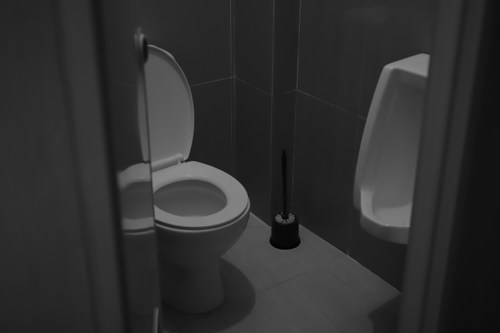
Did you know pathogens can linger on toilet seats for days, posing significant health risks in public restrooms? High-traffic facilities like shopping centres, airports and schools see thousands of users daily, increasing the chances of surface contamination. Maintaining proper toilet seat hygiene isn’t just about cleanliness — it’s a critical step in preventing infections and ensuring public health.
To address this issue, advanced toilet seat cleaning products are set to be introduced in Australia. Already a success in the U.S., Rubbermaid’s innovative solutions aim to enhance restroom hygiene, minimise cross-contamination and improve user confidence in public facilities.
Public restrooms are hotspots for harmful bacteria and viruses. Pathogens like E. coli, Salmonella and norovirus can linger on surfaces — Shigella for up to five days and E. coli for eight. Every flush releases aerosols that spread microorganisms onto toilet seats, surrounding surfaces and even the air. These germs can transfer to users without proper cleaning, leading to gastrointestinal illnesses, respiratory infections and skin conditions. High-traffic locations increase contamination risks, especially in hospitals, schools and transport hubs, where shared facilities see constant use.
Key contamination risks in public restrooms include:
Aerosol spread – Flushing disperses germs onto nearby surfaces.
High-touch surfaces – Toilet seats, door handles and sinks can harbour harmful pathogens.
Cross-contamination – Poor cleaning practices allow germs to spread between users.
Moist environments – Humid conditions help bacteria and viruses survive longer.
Inconsistent cleaning – Infrequent sanitation leads to bacteria buildup and increased infection risks.
Without strict hygiene protocols, public restrooms can quickly become a health hazard.

Rubbermaid’s Clean Seat Foam Dispenser is among the products making it to the Australian market. Designed to combat biofilm and surface pathogens effectively, these dispensers provide a metered dose of high-density foam for consistent sanitation. With antimicrobial push bars featuring silver-ion technology, they actively reduce cross-contamination between uses.
Already gaining traction in the U.S., these dispensers are easy to use and environmentally friendly. Their controlled foam release ensures minimal chemical usage while still achieving a 99% reduction in bacterial load. The result is a safer, cleaner restroom experience for all users.
Toilet seat cleaners offer a proactive approach to infection control, significantly lowering the risk of disease transmission. For users, cleaner restrooms mean a more comfortable and reassuring experience. No one wants to second-guess the cleanliness of a toilet seat before using it.
From an operational standpoint, these dispensers help streamline cleaning procedures. They reduce reliance on manual disinfection, ensuring that seats are consistently sanitised between users. This efficiency saves time and resources for cleaning staff while maintaining high hygiene standards throughout the day.

Facility managers should follow strict cleaning schedules, ensuring toilet seats, flush buttons and door handles are disinfected regularly. Encouraging proper hand hygiene with clear signage and well-placed hand sanitiser stations also helps reduce germ spread.
Here are key ways to improve restroom hygiene:
Disinfect high-touch surfaces – Clean toilet seats, flush buttons and door handles frequently.
Promote hand hygiene – Stock soap dispensers, provide hand sanitiser and use clear reminders.
Use touchless fixtures – Automatic flushers, faucets and soap dispensers reduce contact points.
Improve ventilation – Keep air flowing to minimise moisture buildup and odours.
Manage waste properly – Empty bins regularly and ensure easy disposal of hygiene products.
As Clean Seat products become available in Australia, businesses and facility managers have a unique opportunity to elevate restroom hygiene standards. Investing in innovative solutions isn’t just about keeping spaces clean — it’s about protecting public health. Let’s make public restrooms safer and more hygienic for everyone.
For more information, visit Rubbermaid Commercial Products.